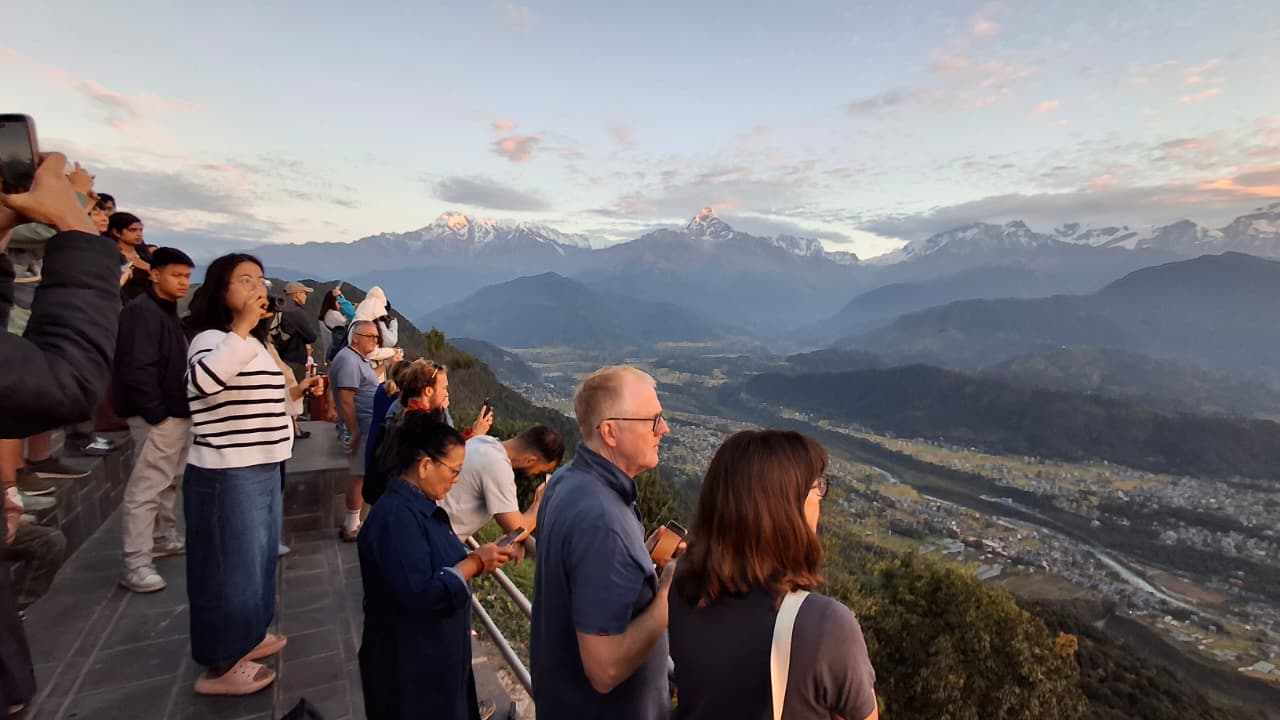

POKHARA: After a slow spell in recent months, Pokhara’s tourism sector is once again bustling with visitors.
The long Dashain-Tihar holidays, open trekking routes, and favorable weather have attracted a surge of both domestic and international tourists, bringing new energy to the city’s hotels, restaurants, and adventure activities.
Pokhara, known for the scenic Annapurna mountain range, tranquil Phewa Lake, and adventure sports such as paragliding, bungee jumping, and zip-flying, remains one of Nepal’s most popular tourist destinations.
The city also serves as the gateway to the Annapurna trekking circuit and the pilgrimage route to Muktinath.
According to Laxman Subedi, president of the Hotel Association Pokhara, nearly 90 percent of hotels in the Lakeside area are currently occupied.
“The long holidays and favorable weather have brought a strong flow of domestic travelers and a satisfactory number of foreign tourists,” he said. “The revival has given some relief to the tourism business that was struggling due to previous disruptions.”
Subedi said Pokhara’s tourism sector currently holds investments worth around Rs 800 billion, with about Rs 600 billion invested in hotels. Around 15,000 people are directly employed in the sector.
Pokhara is home to about 1,200 tourist-standard hotels—700 of them concentrated in Lakeside and Damside—with a total capacity to accommodate around 40,000 guests per night.
Kishor Acharya, president of the Trekking Agencies’ Association of Nepal (TAAN) Pokhara, said trekking has also gained momentum.
“Pokhara is the gateway to world-famous routes like the Annapurna Base Camp, Mardi Himal, and Ghorepani-Poonhill treks,” he said. “Recently, we’ve recorded around 1,000 to 1,200 foreign trekkers and up to 4,000 Nepali trekkers passing through various checkpoints daily.”
He added that to sustain this growth, the government should focus on upgrading trekking routes, ensuring the safety of trekkers, and promoting new trails such as the recently launched Annapurna North (Maurice Herzog) Trail.
Restaurant and Bar Association of Nepal (REBAN) Pokhara chapter president Bishwaraj Poudel also expressed optimism.
“Tourist flow has been encouraging this Tihar season. Restaurants and bars are lively again, giving a much-needed boost to local businesses,” he said.
Hari Bhujel, senior vice president of the Pokhara Tourism Council, emphasized that while the current season is promising, year-round tourism promotion is essential.
“The government must introduce long-term plans to attract visitors in all seasons and promote Pokhara’s natural and cultural diversity,” he said.
He stressed that natural disasters, political instability, and pandemics have shown how vulnerable tourism can be.
A sustainable tourism strategy, infrastructure development, and cooperation between the government and private sector are crucial, he added.
With the new international airport in operation, Pokhara expects even more international arrivals. Popular attractions such as boating on Phewa Lake, sunrise views from Sarangkot, the World Peace Pagoda, Davis Falls, Gupteshwor Cave, and the International Mountain Museum continue to draw tourists seeking both tranquility and adventure.